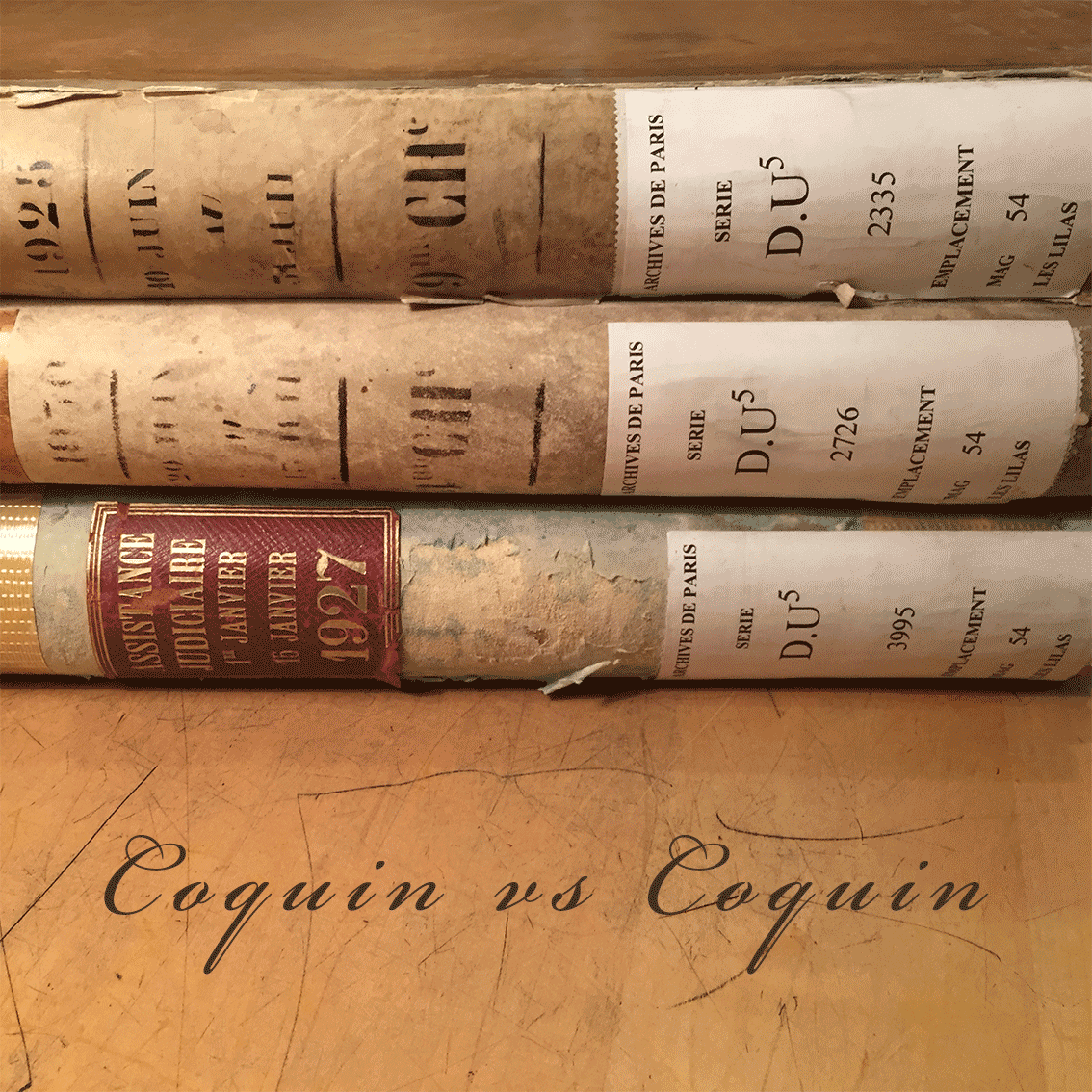The wrong Madame Coquin
In 1925, Monsieur Charles Coquin filed for divorce from Suzanne Berthe Coquin, his wife of fifteen years. While Charles was away fighting in the First World War, Suzanne had allayed the boredom by hanging around in the cafés and bars of Belleville and associating with, as Charles puts it in his statement to the judge, ‘lowlifes and unsavoury types’. He claims that his wife picked up behaviour and a demeanour that shocked him profoundly on his return from the front. Many times since then he’d asked his wife to curb her language and refrain from singing bawdy songs around the house. The judge, somewhat perplexed that the singing of lewd ditties constitutes Charles’s entire grounds for divorce, asks (presumably accompanied by a wink) if there aren’t any other reasons for his dissatisfaction. Has, for instance, Madame Coquin been unfaithful? Oh yes, of course, replies Charles, she’s had several lovers while I was away in the army and even a regular one called Louis. But that’s not the problem…it’s the songs I can’t stand. The judge informs him that the singing of bawdy songs by one’s wife is not sufficient grounds for divorce and he duly dismisses the case. I was hooked, and certainly not going to leave the tale hanging there; I requested the second of three files relating to the wrong Madame Coquin and her husband Charles.
1927
Folder no.2 arrived on my desk. It’s now 1927; two years later, and the couple are back in court, this time at the behest of Suzanne who is now herself requesting a divorce from Charles. She’s come armed with letters from before the war (and before the singing) that show her husband was already unhappy in the marriage. With this correspondence, she hopes to prove that his claim that she engaged in salacious and lewd behaviour was bogus and nothing more than a low attempt to ruin her reputation. The judge is clearly exasperated from the start and seems to decide that in the end, granting a divorce is the best way to get rid of them both. Charles and Suzanne Coquin are duly granted their divorce and that appeared to be the end of the story were it not for the fact that one more hearing was listed – this time…for assault.
1929
I requested Folder no.3 and waited half an hour for it to come up from the vaults. When it arrived, the third and final installment of the Coquin saga went far beyond what I would consider believable if I were watching a film adaptation. Consequently, I can only picture it happening within the frames of a comic book complete with VROOM!! captions, leather helmets and goggles. It’s now 1929 and Charles, re-married, is out for a stroll with his 2nd wife, the new Madame Coquin, in a chic district of western Paris. All is peaceful, until a three-wheeled vehicle approaches at speed and attempts to run them over. It’s Suzanne and her lover Louis on a motorbike and side-car.
